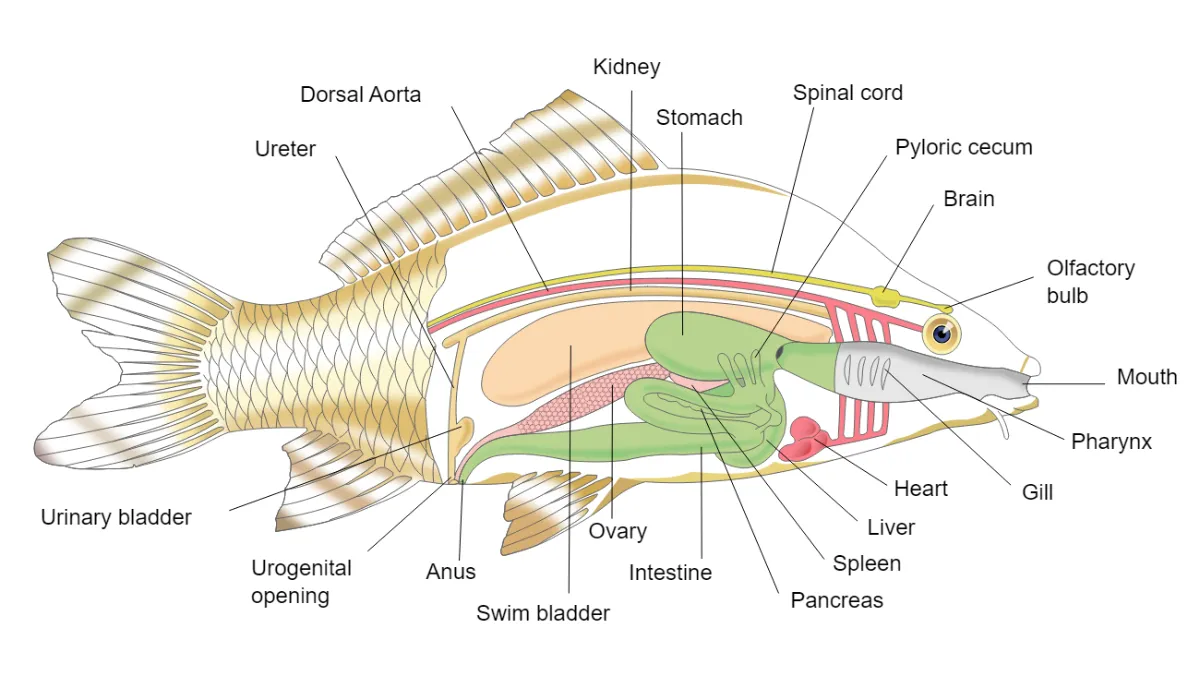Describing a fish accurately is essential for a variety of reasons. Whether you are a marine biologist, a fisherman, a seafood chef, or simply a nature enthusiast, articulating the characteristics of different fish species is crucial. In this guide, we will explore the art of describing fish(How To Describe A Fish), providing a comprehensive understanding of their physical attributes, behaviour, habitat, and more. As the United Fish Company, we are dedicated to sharing knowledge about fish, and we aim to make this guide informative, accessible, and enjoyable to read.
Understanding Fish Anatomy:
Before diving into the intricacies of describing fish, it is important to understand their anatomy. Fish possess unique physical features that differentiate them from other aquatic creatures. Some key anatomical components include:
Body Shape:
Fish come in various shapes, each adapted to different environments and lifestyles. Common body shapes include fusiform (tapered at both ends for efficient swimming), elongated (snake-like shape), compressed (laterally flattened), and rounded (circular or oval).
Fins and Scales:
Fins are essential for fish locomotion and stability. They can be divided into different types, such as dorsal fins (located on the back), pectoral fins (on the sides), pelvic fins (near the rear), and anal fins (on the ventral side). Scales covering the fish’s body come in different patterns, sizes, and textures.
Mouth and Teeth:
The shape and size of a fish’s mouth often reflect its feeding habits. Some fish have specialized jaws and teeth for capturing prey, while others have more generalized mouth structures for omnivorous or herbivorous diets.
Describing Physical Characteristics:
When describing a fish, observing and communicating its physical characteristics accurately is essential. Here are some aspects to consider:
Size and Length:
Measure the fish’s total length from the snout’s tip to the tail’s end. It is helpful to provide measurements in both centimetres and inches to cater to different audiences. Also, mention whether the size falls within the typical range for that particular species.
Coloration and Patterns:
Describe the fish’s overall colouration and any distinctive patterns or markings on its body. Mention the dominant colours, variations in hue, and the presence of stripes, spots, or other unique designs. Colouration often serves purposes such as camouflage, attracting mates, or warning predators.
Fins and Tail:
Examine the fish’s (How To Describe A Fish) fins and tail closely. Note the shape, size, and colouration of each fin and any unique characteristics like fin extensions or filaments. The seat, or caudal fin, can vary in shape, ranging from forked to rounded or asymmetrical.
Understanding Fish Behavior (How To Describe A Fish):
Describing a fish goes beyond its physical appearance. Observing and documenting its behaviour is crucial to gain a comprehensive understanding. Here are some behavioural aspects to consider:
Feeding Habits:
Note the fish’s preferred food sources and feeding techniques. Some fish are herbivorous, grazing on algae and plants, while others are carnivorous, feeding on smaller fish or invertebrates. Understanding their feeding habits helps to paint a more complete picture of the species.
Swimming Patterns:
Observe the fish’s swimming patterns and speed. Note whether it is a fast swimmer, a bottom-dweller, or a leisurely glider. Swimming patterns can provide insights into the fish’s lifestyle, habitat, and feeding strategies.
Social Behavior:
Determine whether the fish(How To Describe A Fish) exhibits solitary behaviour or is part of a larger group or school. Note any interactions you observe, such as hierarchical structures, mating rituals, or territorial displays. Social behaviour is vital for understanding the species’ dynamics.
Identifying Fish Species:
When describing a fish, it is essential to identify the species accurately. Use the following techniques to aid in species identification:
Field Guides and Online Resources:
Consult reputable field guides or online resources specific to your region to help identify the fish(How To Describe A Fish) you encounter. These resources often provide detailed descriptions, photographs, and distribution maps to assist in accurate identification.
Key Features:
Look for key features that distinguish one species from another. These features may include the body’s shape, the presence or absence of specific fins, the size and position of the mouth, or the arrangement of teeth.
External Characteristics:
Pay attention to external characteristics such as colouration, patterns, and unique markings. These features can help narrow down the possible species.
Describing Fish Habitat:
Understanding a fish’s habitat is crucial for providing a comprehensive description. Consider the following factors:
Water Type and Temperature:
Describe the type of water the fish inhabits, such as freshwater, saltwater, or brackish. Additionally, mention the preferred temperature range for the species. Some fish can tolerate various temperatures, while others have specific requirements.
Depth and Bottom Type:
Note the typical depth range in which the fish is found and describe the bottom type of its habitat. Some fish prefer shallow waters near the surface, while others reside in deeper regions. Also, mention if the fish (How To Describe A Fish) is associated with specific bottom types like sandy, rocky, or coral reefs.
Geographic Distribution:
Include information about the fish’s geographical distribution. This can range from specific regions or countries to larger areas such as continents or ocean basins. Detailing about its native range helps readers understand the fish’s natural habitat.
Describing a fish accurately requires careful observation and attention to detail. You can provide a comprehensive and informative description by understanding fish(How To Describe A Fish) anatomy, physical characteristics, behaviour, species identification, and habitat. To ensure accurate species identification, remember to consult reliable resources, such as field guides and online references. The United Fish Company is committed to promoting knowledge about fish, and we hope this guide has provided you with valuable insights into the art of describing fish.













